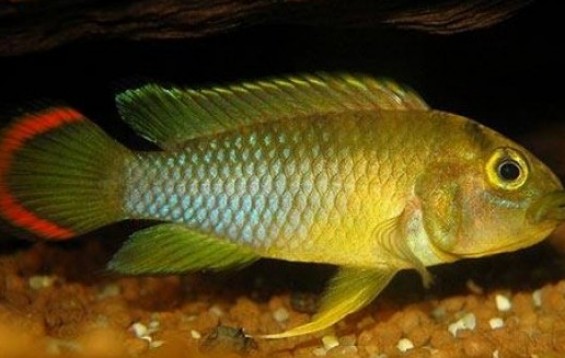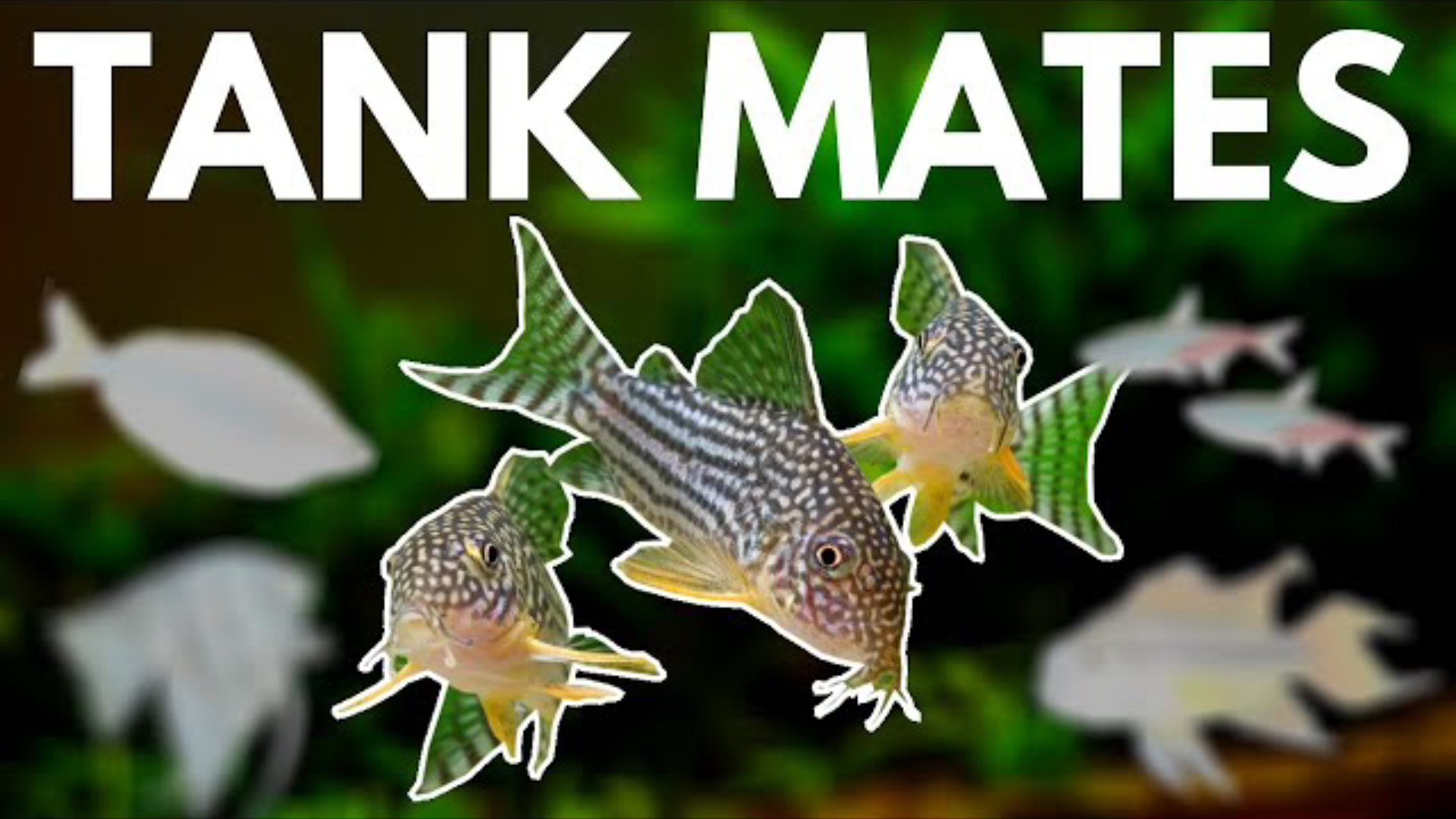- Name:
Panda Dwarf Cichlid
- Family: Cichlidae
- Species: New World Cichlids
- Scientific Name: Apistogramma njessini


General info about Panda Dwarf Cichlid
Males are yellow with a blue rear and a semicircular red fringe in the tail fin while females are entirely yellow with dark spots on the sides and a semicircular red fringe. Males usually reach up to 3 inches while females stay at 2 inches. To keep these fish in captivity, water temperature should range from 73°F and 82°F and water pH should be between 5.0 and 7.0. The tank should have open areas for swimming, hiding places and a sandy substrate. They are peaceful and can be kept in community aquariums, also, they should be kept in groups with 3 or 4 females and a male.
Panda Dwarf Cichlid Diet & Nutrition
This species is carnivorous. In the wild it feeds on benthic invertebrates. In captivity it can be fed with flakes or pellets supplemented with brine shrimp, worms, Artemia or Daphnia.
Determining Sex of Panda Dwarf Cichlid
Males are larger and have a blue coloration on the rear half of their body while females are smaller and have dark spots on their body.
Breeding & Spawning Panda Dwarf Cichlid
To breed this species in captivity the breeding tank should have water temperature ranging from 79°F to 84°F and water pH around 6.5. A group of 3 to 4 females to one male should be kept. The females will display to get the male’s attention, once he is interested, the female will lay her eggs on the roof of a cave and the male will then fertilize them. The eggs take 3 to 4 days to hatch and the fry will become free swimming a few days after, at this point, the fry can be fed with rotifers and newly hatched brine shrimp.
Panda Dwarf Cichlid Origin
This species is native to the Amazon.
Acclimating Panda Dwarf Cichlid
The water in which these fish are packaged is different from the water in the tank, since these fish are extremely sensitive to water conditions the acclimation process is very important. This process should never be rushed. Aquarium lights should be off for at least the first 4 hours of the fish in the new tank and it should not be fed in the first 24h. There are two acclimation methods: Floating Method and the Drip Method.
Floating method - the aquarium lights should be off and lights in the room should be dim, the bag in which the fish is should be placed in the surface of the water to float for about 15 minutes, this allows the water in the bag to adjust to the water in the tank. The bag should then be cut under the knot and the top edge of the bag should be rolled down one inch, then ¼ cup of the aquarium water should be added to the bag, this step should be repeated every 4 minutes until the bag is full, then half the water of the bag should be discarded and the bag should be put to float again and ¼ cup of the aquarium water should be added to the bag every 4 minutes until the bag is full. Afterwards, the Discus can be moved into the aquarium.
Drip method – the aquarium lights should be off and lights in the room should be dim, the bag in which the fish is should be placed in the surface of the water to float for about 15 minutes, this allows the water in the bag to adjust to the water in the tank. The bag contents should be poured into a 1 gallon bucket that has never been cleaned with any chemicals, the fish should be enterally submerged. A siphon, using airline tubing, should be set up and a drip line should run from the main aquarium to the bucket. Several loose knots should be tied in the airline tubing to regulate flow. Sucking the end of the airline tube that goes to the bucket will begin a siphon, the flow should be regulated to 2 to 4 drips per second. Once the water in the buckets doubles, half should be discarded and the process should be repeated until it doubles again. Afterwards, the fish can be moved to the aquarium.
Original Detail
| Name | Species | Family | Scientific Name | More Detail | Added by |
|---|---|---|---|---|---|
| Panda Dwarf Cichlid | New World Cichlids | Cichlidae | Apistogramma njessini | Males are yellow with a blue rear and a semicircular red fringe in the tail fin while females are entirely yellow with dark spots on the sides and a semicircular red fringe. Males usually reach up to 3 inches while females stay at 2 inches. To keep these fish in captivity, water temperature should range from 73°F and 82°F and water pH should be between 5.0 and 7.0. The tank should have open areas for swimming, hiding places and a sandy substrate. They are peaceful and can be kept in community aquariums, also, they should be kept in groups with 3 or 4 females and a male.
|
PalaciosAn |
Changed by users
| Submitted Date | Submitted By | Status | Action |
|---|





